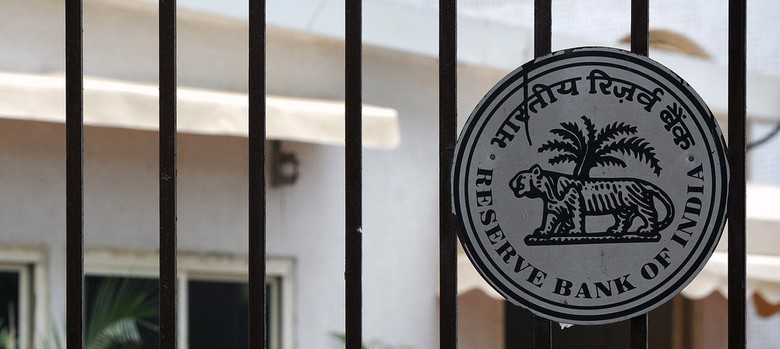Trending Now
- 830 voters names go missing in Kavundampalayam constituency
- If BJP comes to power we shall consider bringing back electoral bonds: Nirmala Sitaraman
- Monitoring at check posts between Kerala and TN intensified as bird flu gets virulent in Kerala
Columns
Rs 2,750,000,000,000 and counting: Why the government needs to stop using banks as ATMs
![]() February 18, 2016
February 18, 2016
Devangshu Datta
There is an old Zen koan that goes something like this: If a tree falls in the forest and there is nobody to see it, has the tree really fallen? The financial news last week led one to wonder if this could be adapted thus : If a bank fails, and nobody realises it is bankrupt, has the bank really failed?
The relevance is of course, the fact that many of India’s banks are revealed as close to technical bankruptcy. Actually many of these institutions have been near-bankrupt for years. But their dubious status has rarely been pointed out in explicit terms. Those who needed to know, knew.
The Reserve Bank of India has decided that it will force banks to recognise bad debts and provision for sticky loans in more transparent fashion. This had forced banks to undergo what Raghuram Rajan has referred to as “Deep surgery”. As a result, the problems of Indian banks are now being more widely recognised.
Let’s carry the medical analogy a little further, as Rajan himself did. It is impossible to treat a health problem without acknowledging it exists. “Applying band-aid”, as Rajan suggested banks did when surgery was needed, is counter-productive. In the worst case, if a patient is terminally ill, it is better he or she knows. Then a will can be made and assets disposed of, as they see fit before passing on.
That’s where the analogy breaks down for a bank. It is quite possible that a bank with serious problems can just carry on doing business indefinitely. So long as the bank’s owner is willing to put more money into it at need, and depositors and creditors don’t panic, a nearly-busted bank can take loans, give loans, etc. In fact, many of India’s banks have done precisely this.
Panic station
On the other hand, if a financial problem is acknowledged in full-blown dimensions, it can cause panic. And panic can bring down even a healthy bank. It can even bring a healthy banking system down.
Here’s the deal. India’s public sector banks generate around 72 to 73% of all bank loans. There are 24 government-controlled banks listed on the stock exchanges. All of them, pretty much, seem to be in trouble. Things have been getting worse over the last three or four years.
Between 2011-’12 and 2014-’15, public sector banks have written off over Rs 114,000 crore in unrecoverable loans. As of September 2015, about 6%t of “assets” held by public sector banks were still reckoned to be “non-performing assets” or NPAs. Translating, roughly 6% of all loans outstanding by public sector banks as of Sep 2015 were unlikely to see the principal lent being recovered, let alone receive any interest payments.
This sum of gross NPAs amounts to over Rs 306,000 crore. Banks “provision” for such loans by setting aside profits to cover the loss of capital. After provisioning, net NPAs are much less. Still, net NPAs for public sector banks amounts to Rs 174,000 crore.
Now, it is not just the sheer size of the write-offs that is important.
Here’s how banks work. A bank has owned funds – equity pumped in by the owners and profits accumulated over the years (reserves). The owned fund are the “net worth”. A bank also has borrowed funds. About 90% of funds at a bank’s disposal tend to be borrowed.
If that Rs 174,000 crore was totally provisioned for, it would mean a write-off of approximately one-third of the net worth of India’s public sector banks. The bad loans are unevenly distributed. Some public sector banks could get their net worth entirely, or almost entirely, wiped out.
There’s more in the way of potential horror. Banks hide NPAs by “ever-greening”, which is lending more money to the defaulter. It’s anyone’s guess how much ever-greening occurs but it could be a lot. Banks also allow restructuring. That is, defaulters are given easier terms (lower interest, longer times) to recover some part of a bad loan.
Those loans – “evergreens”– and restructurings – are also very likely to go sour. About Rs 270,000 crore of restructured loans were outstanding as of Sep 2015. Based on history, about 40% of the restructured loans will turn into NPAs. Say, banks will lose another Rs 100,000 crore, making it a total of Rs 275,000 crore or so when restructures are taken in conjunction with current net NPAs.
More taxpayer money
Would that sort of bad loan burden put public sector banks out of business? No – since these banks are owned by the government of India. The government will just pump more taxpayer money into them. In fact, it will have to pump a great deal more than “just” the Rs 275,000 crore or so required to bring net worth back to scratch.
India has to meet international banking standards. The international requirements of capital adequacy were hiked under the Basel III Accord. Banks must maintain capital adequacy at around 11.5% for total loans under Basel III. This means a rise in net worth.
The government will, therefore, have to subscribe huge amounts of capital, over and above covering the losses. By some estimates Basel III will mean subscribing Rs 180,000 crore – and the government is so far, committed to producing just Rs 70,000 crore of that.
Now whatever the government does subscribe will come out of other bits and pieces of the consolidated fund, which means that other schemes and programmes of the Centre will inevitably be under-funded.
Another obvious alternative route to resuscitation would be to sell off government stakes in order to raise net worths of the public sector banks. However, the government is entirely unwilling to reduce its stakes.
For that matter, the stock-market investor would not be willing to pay much for a stake in a near-bankrupt bank. Out of the 24 listed government banks, 20 stocks now quote at less than official book value (book value is a synonym for net worth per share). Many quote at less than half of book value. Meanwhile, private banks quote at anywhere between 3-8 times their book value. The difference in valuations clearly suggests that investors don’t believe public sector bank balance sheets.
A final point: Nothing will change, until the way public sector banks are allowed to function is changed. These banks often make bad loans, knowing that the money will not be recovered. This is due to political pressure and also due to the knowledge that a corrupt bank official (who loans out money to a friend) has an excellent chance of getting away with it. Until politicians stop using these banks as automated teller machines or ATMs and internal controls are tightened, public sector banks will bleed. Recapitalisation will just kick the problems a little further down the road.
Disclaimer:The views expressed above are the author’s own






















